Z68 SSD Caching with Corsair's F40 SandForce SSD
by Anand Lal Shimpi on May 13, 2011 3:06 AM ESTAnandTech Storage Bench 2011 - Light Workload
Our new light workload actually has more write operations than read operations. The split is as follows: 372,630 reads and 459,709 writes. The relatively close read/write ratio does better mimic a typical light workload (although even lighter workloads would be far more read centric).
The I/O breakdown is similar to the heavy workload at small IOs, however you'll notice that there are far fewer large IO transfers:
| AnandTech Storage Bench 2011 - Light Workload IO Breakdown | ||||
| IO Size | % of Total | |||
| 4KB | 27% | |||
| 16KB | 8% | |||
| 32KB | 6% | |||
| 64KB | 5% | |||
Despite the reduction in large IOs, over 60% of all operations are perfectly sequential. Average queue depth is a lighter 2.2029 IOs.
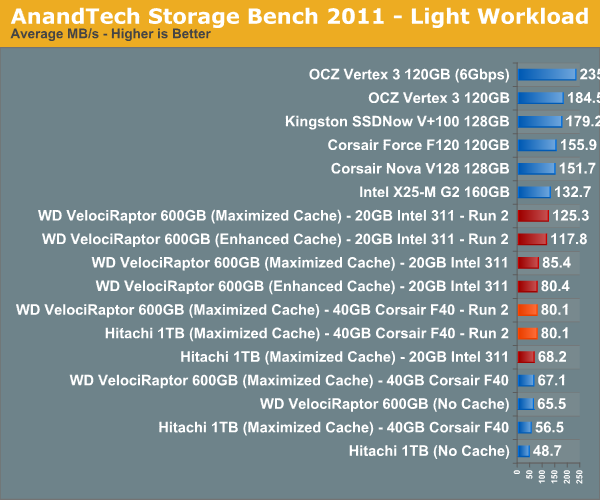
Our light workload doesn't do very well on the F40 at all. As we discovered in our launch review, the heavy workload runs for long enough (~3 hours) that performance doesn't change from run to run. Our light workload however only takes around 30 - 45 minutes to run and thus we see a significant performance difference from one run to the next (after 2 runs the performance gains level off though). While the Intel SSD 311 climbs significantly in both runs, the F40 shows a marginal improvement in the first run and tops out at around 80MB/s regardless of what HDD it's paired with. Clearly we're hitting a bottleneck here, one that doesn't exist on the 311.
An obvious benefit of Intel's SSD 311 is that its firmware was designed with caching in mind, something that isn't true for standard SSDs used as a cache.
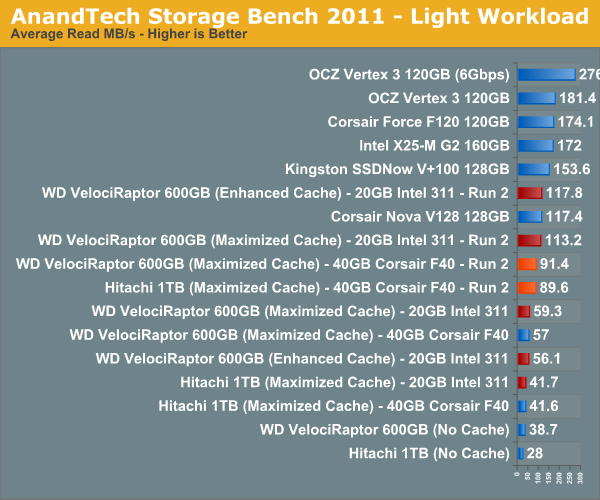
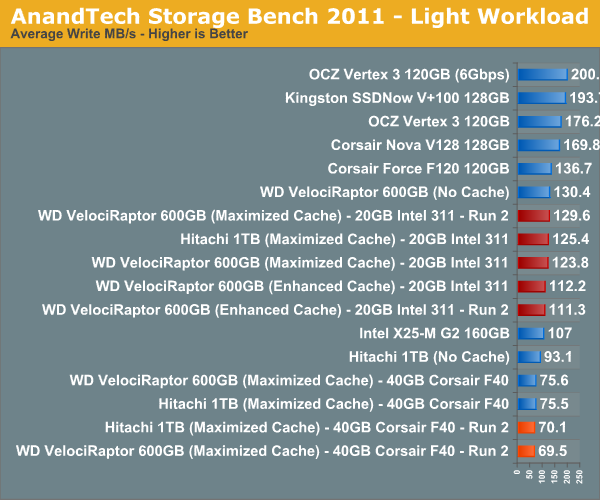
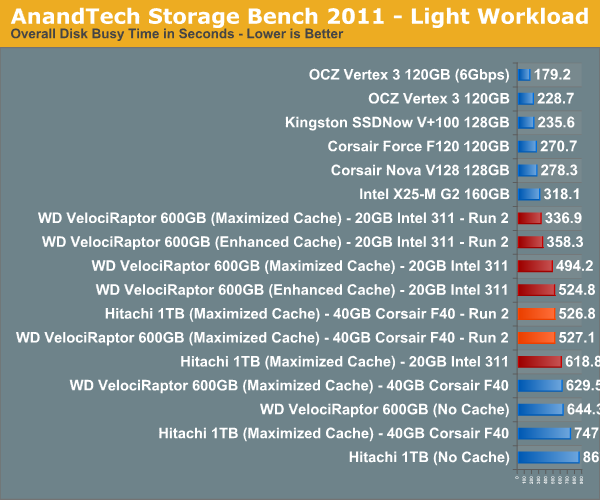
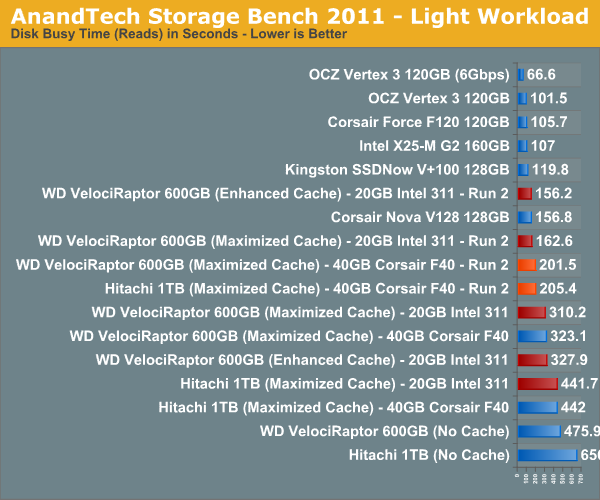
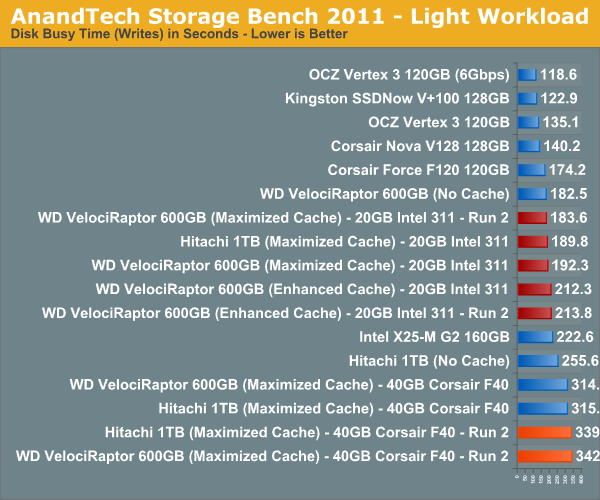










81 Comments
View All Comments
Dribble - Friday, May 13, 2011 - link
The reason being they are so common they are cheap. In the UK you can't get that 20GB Intel SSD yet, and while you could get the 40GB force (or vertex 2) the cost difference is very small - like I did you might as well get the 60GB vertex 2. I suspect a few others will do the same thing.Hence it would seem a good test.
The other thing I'd like to know is if you can buy a large capacity SSD (e.g. 240GB vertex 3) and then partition it giving 180GB to use as a boot drive, and the other 60GB to cache your monster games disk.
10Goto10 - Friday, May 13, 2011 - link
Or a 6Gb Sata Vertex3 240 GB, it should have enough IO, throughput and space to maintain both os and cache.Ryan Smith - Friday, May 13, 2011 - link
Yes, you can partition SSDs. In fact we've thrown around the exact same idea.10Goto10 - Friday, May 13, 2011 - link
According to the test hardware spec, the test is run on H67 not Z68, copy paste ;) ??mschira - Friday, May 13, 2011 - link
Would it be possible to get some SSD caching on a thinkpad t-series? they not only have a normal hard drive slot but they also have a miniPci slot for which they explicetly support small SSD to mount there...now having SSD caching would be great...
M.
DanNeely - Friday, May 13, 2011 - link
First page, the table lists an h67 mobo for the test, not a Z68jdavenport608 - Friday, May 13, 2011 - link
Both your articles about Z68 mention that SSD caching can be used in front of a RAID array. Do you plan on doing an article that describes the benefits or value of using a SSD cache in conjunction with different RAID arrays?weh69 - Friday, May 13, 2011 - link
I'd love to see results for a 60GB SSD as cache in front of a dual 2TB WD black RAID-1 array as the system drive.hechacker1 - Friday, May 13, 2011 - link
If that is possible, I would really like to see that too.Especially for a raid-5 config. Since write performance is limited so much by parity writes, having a cache could really help (on maximum mode).
kepstin - Friday, May 13, 2011 - link
This Intel SSD caching feature is a bit disappointing in one way.It's obvious that the caching work is done completely in software - in the Windows chipset driver, the same way as the motherboard RAID features work. There probably is some BIOS support required to boot off it though.
There's no technical reason why the same technology couldn't be used on other chipsets - it's just that Intel's decided to artificially limit it to the Z68...
I wouldn't be surprised if third-party tools and a generic Linux driver that can do the same thing on any chipset start showing up later this year.